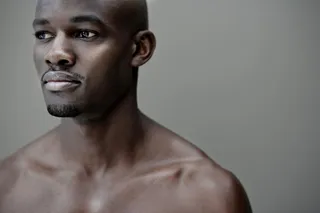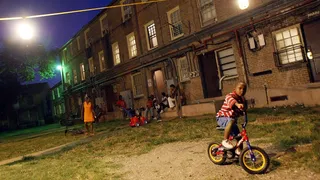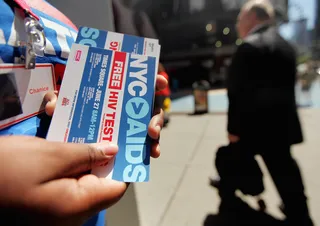The 411 on Young People and HIV/AIDS
Important facts about HIV and the under 30 crowd.

1 / 10
National Youth HIV & AIDS Awareness Day - April 10 marks the third annual National Youth HIV & AIDS Awareness Day (NYHAAD). Almost 40 percent of all new HIV infections occur between someone 13-29. Read more about important facts about HIV and the under 30 crowd. —Kellee Terrell(Photo: Image Source/Getty Images)
Photo By Photo: Image Source/Getty Images

2 / 10
Why AIDS Awareness Matters to You - This generation has never known a world without HIV/AIDS and they are slowly becoming the most affected population. Each month, 1,000 young people are diagnosed with HIV/AIDS and currently more than 76,000 young Americans are living with the virus. More needs to be done to educate young people about this preventable disease. (Photo: Spencer Platt/Getty Images)

3 / 10
Youth and HIV Stats - According to the Centers for Disease Control (CDC), young people aged 13–29 accounted for 39 percent of all new HIV infections in 2009. Meanwhile they account for a mere 21 percent of the population. Sadly, the majority of these infections — 65 percent — occur among African-Americans. (Photo: Brendan Smialowski/Getty Images)

4 / 10
Black Gay and Bisexual Men - Black men who have sex with men (MSM) bear the largest brunt of new infections in the U.S. In 2009, young Black MSM made up 27 percent of ALL new HIV infections among Americans and 69 percent of all new infections among young folks. Even worse, new infections rose 50 percent among young MSM from 2006-2009. (Photo: Roy McMahon/Getty Images)
Photo By GettyImages

5 / 10
Black Women and HIV - The good news: New infections among Black women went down almost 20 percent in 2010. Yet this disease still disproportionately affects us, especially those 15-29, compared to their white counterparts. One in 32 Black women will test HIV-positive in her life and we are 15 times more likely than white women to test positive. (Photo: Spencer Platt/Getty Images)
ADVERTISEMENT

6 / 10
What’s Putting Young Folks at Risk? - It’s a range of factors such as poverty, lack of access to health care and testing, gender oppression/violence, substance abuse, high levels of HIV in the community already and homophobia to name a few. But there are other factors such as lack of sex education, survival sex, past sexual abuse, having older sexual partners who control condom use that increase young people’s risk. (Photo: Mario Tama/Getty Images)
Photo By Mario Tama/Getty Images

7 / 10
The Importance of Getting Tested - Sixty percent of young people living with HIV/AIDS don’t know they are even positive. And while Black teens are more likely to get tested than anyone else, overall only 13 percent of sexually active high school students have ever been tested for HIV. We have to increase those numbers and that starts with you: Know your status and get tested regularly. (Photo: Mario Tama/Getty Images)

8 / 10
The Importance of Condom Negotiation - Talking to your male partner(s), whether you are gay or straight, about condoms can be hard, especially if he isn’t keen on using them. But that doesn’t mean you have to sit back and be silent either. Remember open communication is key.(Photo: Touchlife Images/Getty Images)

9 / 10
Heterosexual Men Need to Join In, Too - The down-low is not fueling AIDS among Black women, therefore it’s important to engage heterosexual men in being part of the solution to ending AIDS among Black women. Young straight Black men need to get tested for HIV/STDs regularly and use condoms consistently, even in monogamous long-term relationships. (Photo: Brendan Smialowski/Getty Images)
